
Discovery Behavior and Functionality
Discovery Behaviors:
Behaviors are specific instructions for discovery schedules to follow. Behaviors are a powerful tool to provide for
- Load Balancing of MID Servers
- Protocol Selection
- Domain Awareness
It’s the best practice to utilize Behaviors for only Protocol Selection. By implementing clustering, one can achieve LOAD balancing of MID Servers which includes failover. Domain Awareness is accomplished by using Windows Credentials in the instance in conjunction with Power Shell discoveries.
Protocol selection allows to select which ports should be scanned in the initial phase of discovery to limit the types of devices that will populate into CMDB per schedule.
Discovery Behavior identifies that which MID server should launch which types of probes.
With the help of Behaviors, one can assign different task to multiple MID servers. Behaviors are available in Discovery schedule for discovering configuration item.
Discovery Functionalities:
Discovery functionality defines the activities, task, specifically the protocols to be detected by selected MID server in the Behavior.
Behaviors can be constructed as, ‘A Schedule can utilize a Behavior which contains functionalities. Functionalities contain functionality definitions. Functionality definitions are containers of port probes which are derived from IP Services.’
Let’s take an example of an organization where only Windows operating System needs to get discovered.
When one schedule standard discovery against any IP address or device, discovery launches Shazzam probe to scan the ports against WMI, SSH or SNMP protocol to find the type of device. In the current scenario, one only wants Windows OS discovery. Discovery shouldn’t be checking for SSH or SNMP protocols. With the help of Behaviors, one can specify which protocol should run on the target machine.
Let’s go ahead and see the Implementation of above scenario:
Step 1: Navigate to Discovery Definition=>Behaviors=>Click on New
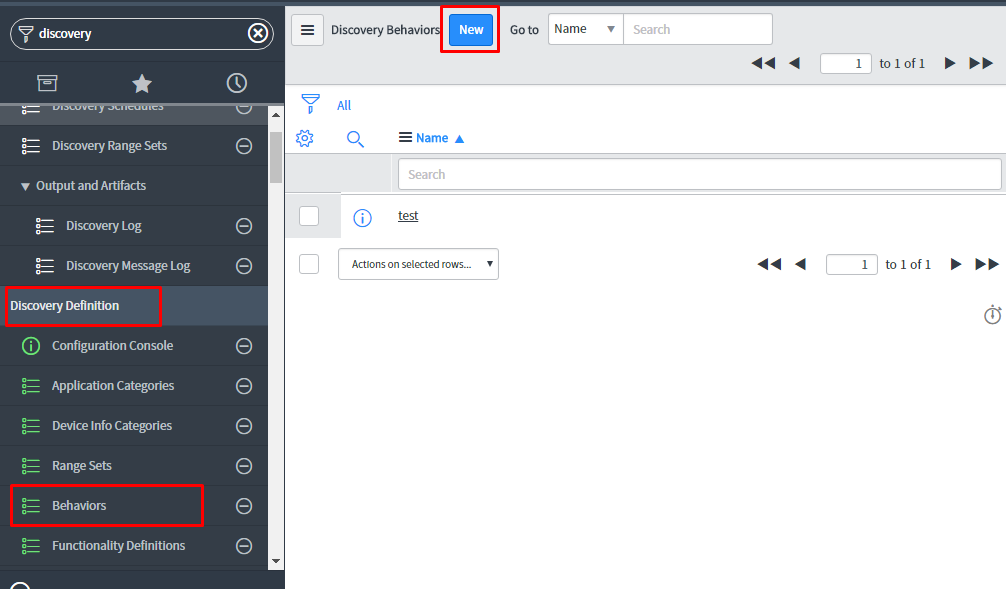
Step 2: Name the Behavior that you want to create.
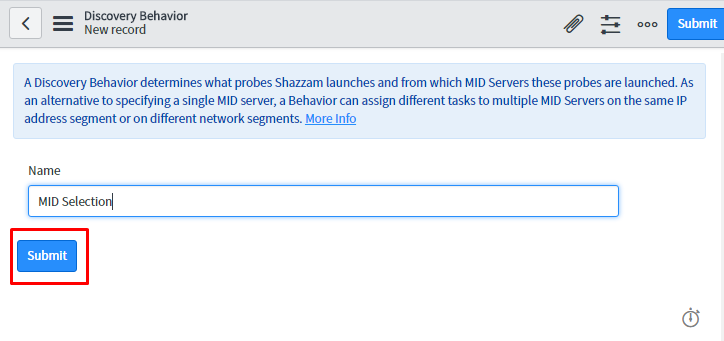
Step 3: Open created discovery Behavior => Create Discovery Functionality=>Click on New
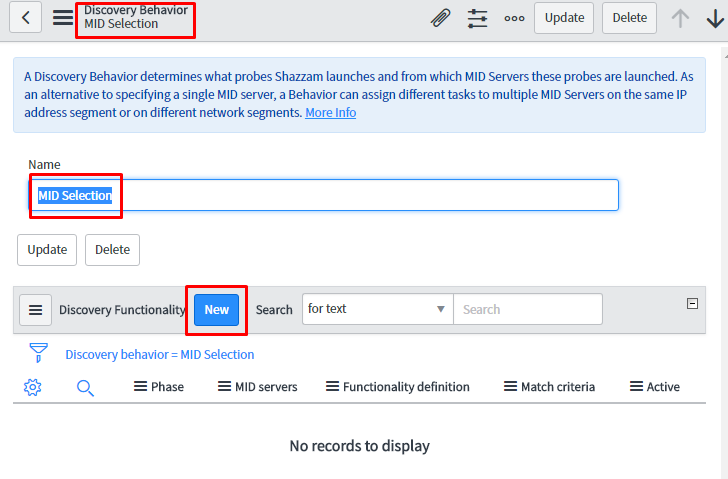
Step 4: Fill the required information. In this, one has to create Functionality Definition as shown in the screenshot =>Select the functionality =>Select appropriate MID server to be used.
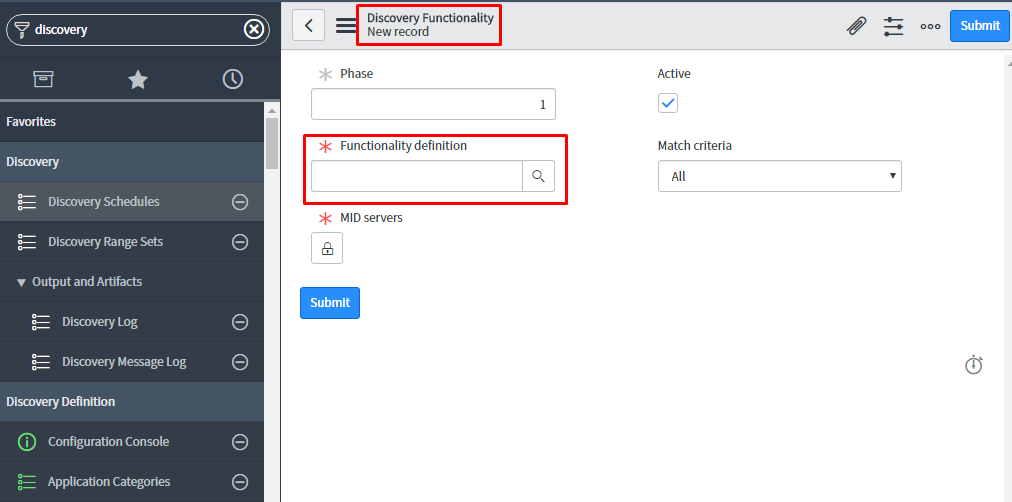
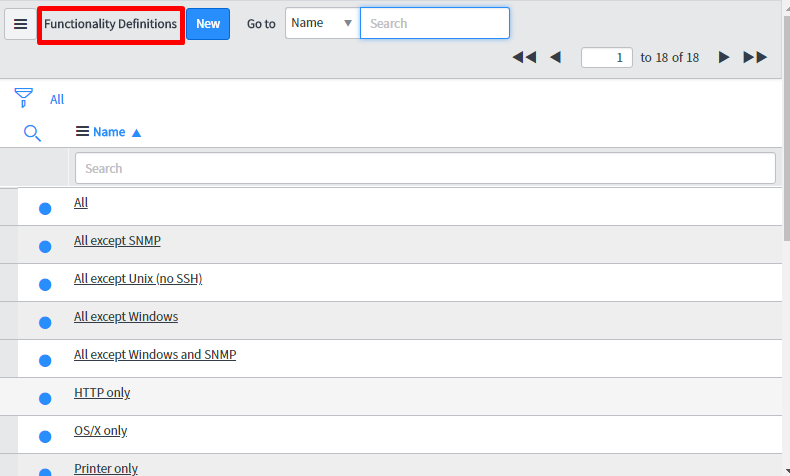
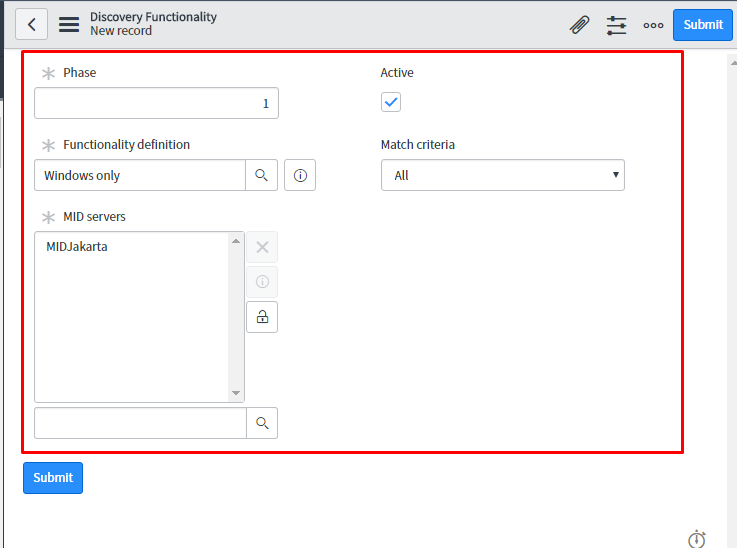
Step 5: After creating Behavior, it looks as follows:
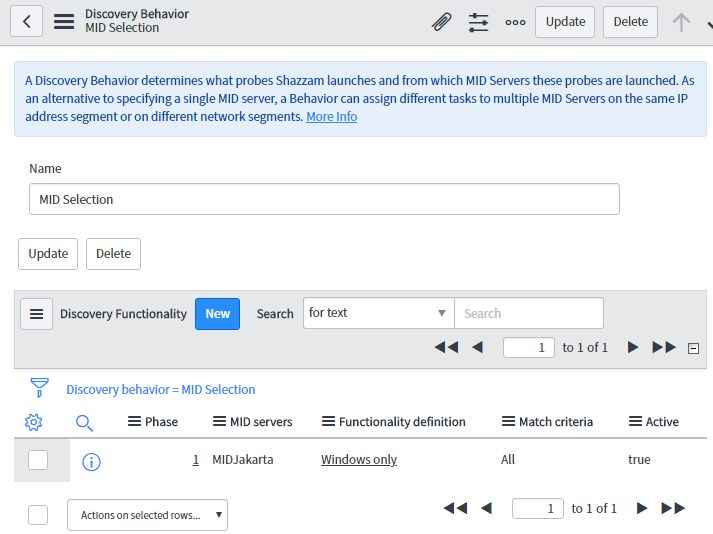
Step 6: Now create a discovery schedule by
- Navigating to Discovery=>Discovery Schedule and click on New.
- Select the Discover Item as Configuration Item.
- For MID server selection Method, select Use Behavior.
- Select the Behavior that one has created and save the changes.
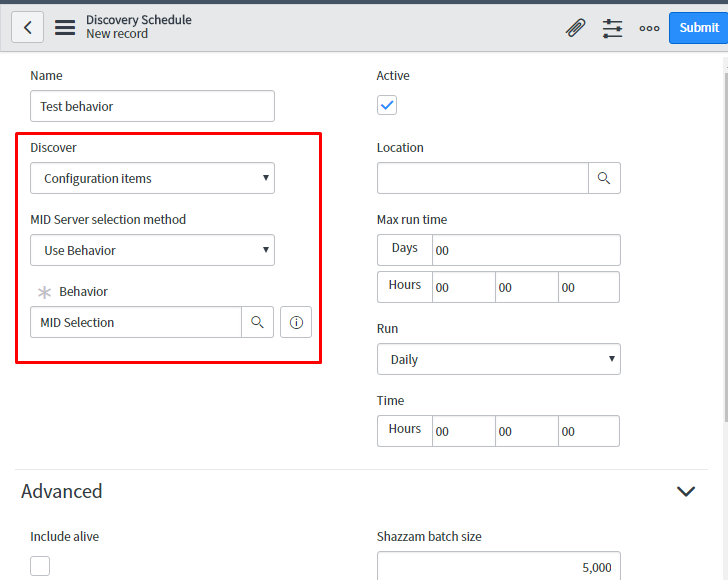
Step 7: Click on discover Now and discovery will start. Only the Windows probes will be executed on the target machine.
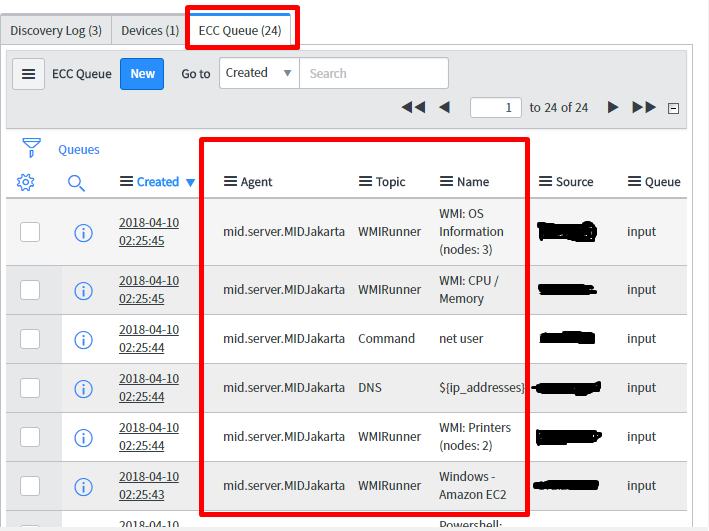
As shown in the ‘ECC Queue’ section of the above screenshot, only Windows related probes get executed on the target machine justifying the Behavior mentioned earlier.
We are pretty sure that this blog will help to implement discovery in more efficient way. Any comments\suggestions are most welcome. We have posted further blogs as well on other topics and will frequently come back with something innovative
